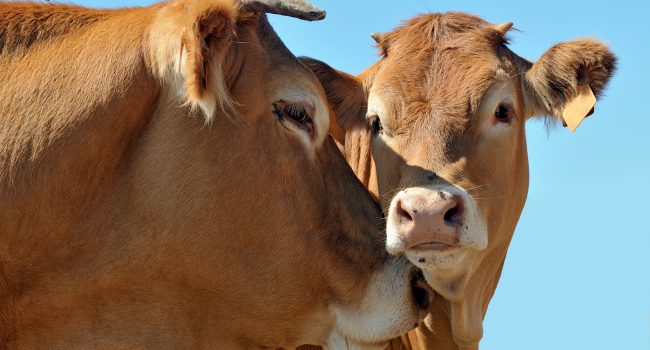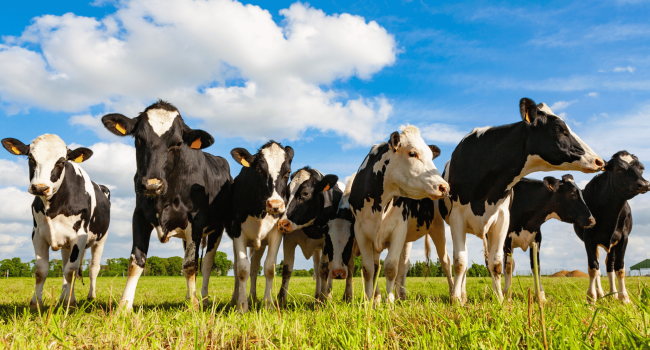Definition and facts
Mycotoxins are naturally occurring contaminants produced by fungi that occur in feed and feed ingredients when specific conditions of moisture and temperature are met. The five most common types of mycotoxins are Aflatoxins, Fumonisins, Trichotecenes, Ochratoxins, and Zearalenones.
Multiple mycotoxins may be present in one sample, and up to 70% of the analyzed samples contain more than one type of mycotoxin. Studies of multiple mycotoxin contaminations show that these interact in different ways with different effects. They can contaminate animal feed as well as human food, and cause harm to both people and animals.
Strict regulations are in place when it comes to minimizing contact with these contaminants, as exposure can result in serious health problems and even death (Russell, et al. 2010).
Weaning period
At this stage, piglets have several challenges for making a successful weaning:
Adaptation to the feed intake: one of the main target for the farmer is to insure that the piglets will eat properly after weaning. Longer will be the time without eating at weaning, higher the risk of diarrhoea will be;
Adaptation to the feed distribution, from milk suckled at the sow to a solid feed;
Feed composition changes: from milk containing lactose to a prestarter feed containing mainly plant-based raw-material (with new nutrients as starch for example).
Adaptation to a new environment: from farrowing crate to post-weaning pen, with possible variation of the microflora present in the environment
All those changes require an adaptation of the digestive microflora. It will lead to higher digestive risk via a gut microbiota dysbalance involving diarrhoea and a loss of performances. Collibacillosis infection are one of the most frequent in piglets and are caused by an over multiplication of Escherichia coli in the gut.
Diarrheic E.coli can be split into several categories based on their virulence properties. Strains O141K85, O138 and O139 belong to the E.coli category of « Attaching and Effacing » (AEEC) and more specifically to the group producing Verotoxin (VTEC group). Those toxins involve lesions of endothelium vessels, modify vascular permeability, leading to post-weaning diarrhoea and development of oedema.
E.coli strains O157K88 and K99 belong to the group of Enterotoxigenic E.coli (ETEC). This bacterial strain involves severe neonatal and post-weaning diarrhoea.
Growing environments for mycotoxins
Climate is the most important factor when it comes to contamination caused by mycotoxins. The most critical aspects for them to grow and flourish is the presence of favorable temperatures and presence of the correct moisture levels. Human activities that have recently resulted in changes in the global climate include clearing of forests, use of fossil fuels, and others (Russell, et al. 2010).
Due to climate change, current climates where temperatures are cooler and not favorable to the growth of fungi producing mycotoxins may become more apt to develop problems, as temperatures and humidity levels increase. In fact, weather models predict that in the span of the next fifty years, rainfall in the UK will decrease while Summer and Winter temperatures rise (Hulme, et al. 2002; Miraglia et al. 2009). In addition, drastic rises in temperature are predicted for Australia in the next one hundred years (Chakraborty et al. 1998).
Crops susceptible to mycotoxins will be affected by these changes in climate and the mycotoxins themselves will likely change and adapt, including the possibility of overcoming host resistance more rapidly. More research in these areas and in other potential issues is needed (Chakraborty et al. 1998).
It is projected that the biggest risk for increased mycotoxins will happen in developed countries with temperate climates. In these areas, it is thought that temperatures will increase to a level that is in the optimal range for growth of these metabolites. The changing weather could seriously threaten agriculture systems and food security if staple crops like maize and rice are affected (Russell, et al. 2010).
The impact of mycotoxins on the agri-food chain
Mycotoxins are not only a factor in the field, but in storage methods as well. There, increased temperatures and humidity brought on by climate change can result in increased incidences of mycotoxins during transport, storage, and even while being used or fed (Russell, et al. 2010).
Crops where mycotoxin contamination is present but not identified and/or addressed can lead to multiple issues with livestock animal species. While typical results of mycotoxins and multiple mycotoxin contamination can be varied, some symptoms may include decreased weight gain, decreased feed intake, increased weight and lesions of internal organs (liver and kidneys), suppressed immune system, reduced reproductive efficiency, and impaired udder health.
Because food and feed can be completely ruined for both animal and human consumption if these toxic compounds are not properly identified and treated, the effect on agriculture systems will be profound (Russell, et al. 2010). This may result in more spoilage and waste in the agri-food chain as feedstuffs are affected at multiple points.
In addition, an increase in temperatures and humidity may change the types of crops grown in certain areas and regions, impacting those (humans and livestock) who depend on these crops as a food source. A time where maize is unable to be grown in the warm regions is not out of scope given the rate of climate change (Russell, et al. 2010).
Management of mycotoxins
Looking into the future, proactive measures need to be taken on the part of growers and feed manufacturers alike to help protect the food and feed supply. Prevention is key and the importance of recognizing the factors that lead to mycotoxin growth (increased temperatures and increased humidity) cannot be overstated. Vigilance in the identification and treatment of these toxins is going to be more critical as ever.
Technology is making progress to provide cutting edge detection and monitoring of mycotoxin levels. As climate and the environment are constantly evolving, using a simple binding solution is no longer sufficient. The hope is that human impacts driving climate change can be addressed and changed, but until then, vigilance and prompt action are key.
To be proactive and have a preventive approach to manage mycotoxins risk in animal nutrition, ADM has developed a global expertise in the mycotoxins contamination management. In a more and more challenging environment, using a simple binding solution is not sufficient. Thus, ADM offers its customers a complete approach of mycotoxins management risk thanks to a full package of services. This comprehensive solution combines quality control plan support, analysis, technical advice, a high-end technical products range: T5X and the Mycowatch® app.
As previously mentioned, in mycotoxins risk management, prevention is the key point for success. Indeed, it is critical for feed producers to know the contamination levels of their raw materials to be able to have a preventive approach. For that, ADM helps customers to build their control plan and offers analysis solutions depending on their situation and objectives.
Having analysis results is the first step of the preventive approach, to go further, ADM developed the Mycowatch® app. This monitoring tool allows to valorize mycotoxins analysis results in order to evaluate the contamination risk and to know the precise T5X product dose to use. The app is mainly dedicated to nutritionists and feed producers formulators and usable for their day-to-day work. Mycowatch® is available on the Google Play Store and the App Store.


